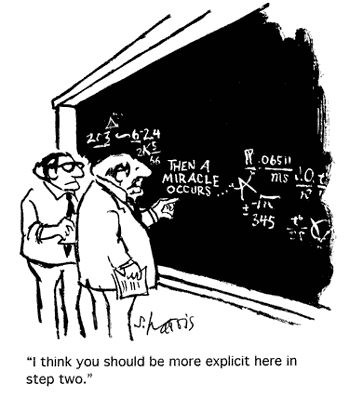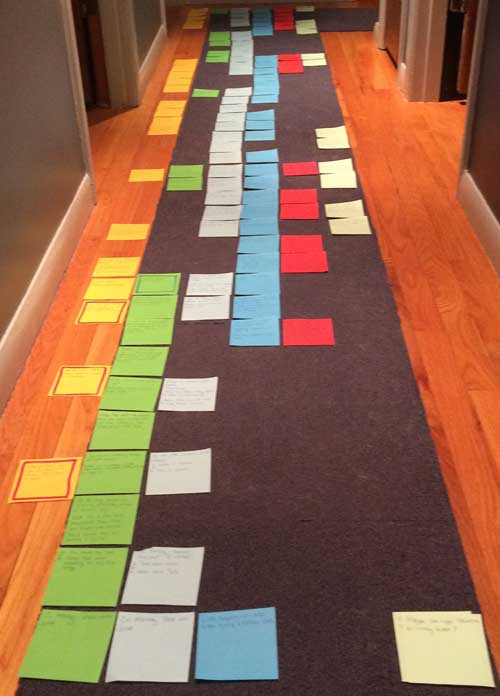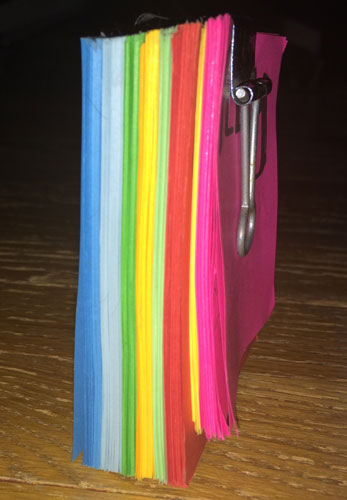Untangling Things
![]() Son of Science Novel has been quite a challenge to outline. We know what events kick the plot into motion, and we know how things come to rest at the end. It’s that pesky middle part that’s been giving us trouble. It’s kind of like this:
Son of Science Novel has been quite a challenge to outline. We know what events kick the plot into motion, and we know how things come to rest at the end. It’s that pesky middle part that’s been giving us trouble. It’s kind of like this:

For us, plotting a novel is a lot like combing out long, tangled hair. There are many strands, and it takes patience to get them all in order. If we do our work properly, in the end everything will be silky smooth and free of snarls. It helps if you have a technique.
Our technique is the Plot Rainbow, which we’ve talked about before. Working to untangle Son of Science Novel, we’ve been approaching the story from multiple angles, running through it from various characters’ points of view. We make a little bit of progress with each pass, detailing more plot beats and gaining a deeper understanding of our characters and their motivations.
We know that Hortense will arrive at the cat food factory in time to save Godrick from being thrown into the giant pressure cooker so that the two of them can fall, improbably, in love. The trick is making her trip to the industrial zone feel internally motivated. The reader cannot wonder why such a prim, perhaps even prissy woman would darken the door of such a smelly establishment. Her arrival must feel inevitable based on what we already know about her.
Working backwards is often a good way to solve these problems. If you know that, for your plot to work, Hortense MUST visit the cat food factory, and the only reason you can come up with for her to do that is that she just inherited it, then you know that earlier in the story you need to make significant mention of her terminally ill eccentric aunt. (The one with 38 cats.)
Bringing together Hortense and Godrick does involve more than just keeping him from getting cooked. Their romance, however unlikely it seemed at first, must arise from within each of them and feel — after the fact — as natural and inevitable as the cat hair on all their clothes. This is where we really rely on our partnership, by role-playing the coquettish heiress and the plucky workplace safety inspector. The characters’ lives intertwine, braiding together into a unified story.
Having a process, and tools like the plot rainbow, makes it easier to work out the snags. Working through it with a partner also helps, allowing you to hand the comb to someone else who might have a better angle on the trouble spot.


 We spent an evening carefully combing through that first Rainbow, making notes about points that were still vague, or questions that were still unanswered. Then we retired to the auxiliary writing cave and filled in all of the missing information.
We spent an evening carefully combing through that first Rainbow, making notes about points that were still vague, or questions that were still unanswered. Then we retired to the auxiliary writing cave and filled in all of the missing information.